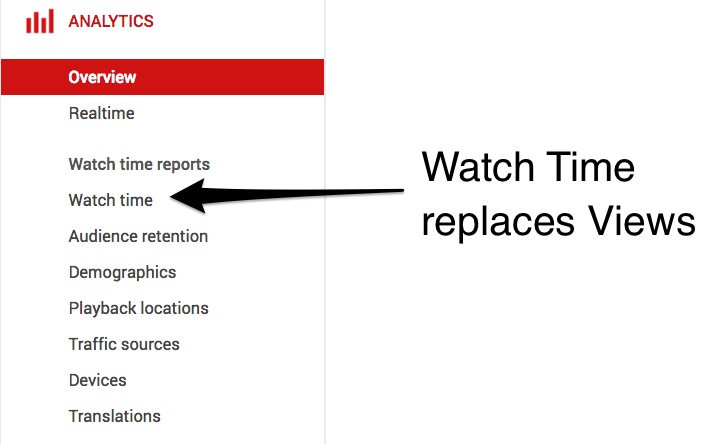For most of YouTube’s history, the most important ranking factor was views. Get enough people to click the play button and watch your video climb in search ranking.
Over time, the net result of this was a diminished user experience, promoting silly things like click-bait cleavage thumbnails and gaming the system by purchasing views from overseas click farms.
More importantly, it pushed genuinely good and helpful videos down in the rankings.
2012 Algorithm Change
In 2012, YouTube made a significant change to the ranking algorithm by emphasizing the metric of “watch time” as a key ranking factor. This change looks at the following:
- How long viewers watch a video
- How much “site watch time” a video encouraged OR How often and for how long a video bring people to YouTube and keeps them there

Strategies for Promoting Watch Time
This new emphasis on Watch Time means that in order to be successful on YouTube you must focus on retaining viewers and keeping them on your channel for as long as possible.
A good Watch Time strategy should include the following:
- Create an Open Loop at the Beginning of Your Video. This is a psychological trick that plays into the mind’s desire to resolve tension and mystery. You can create open loops in your video by teasing an idea, not explaining it fully, and then promising that you will explain it later in the video.
Movies and TV shows are fantastic at creating open loops. For fans of the show LOST, Season 3’s famous “We have to go back!” moment is a classic open loop.
“Why does he want to go back? What happened? I have to know!!”

- Use annotations to tease other videos – This is similar to internal link strategies for written content. The idea is to, wherever possible and relevant, use YouTube’s annotation feature to link to other videos on your channel to encourage viewers to watch more.
- Use consistent and branded thumbnails – Using a consistent thumbnail design for similar videos will help to drive “linear watching” and encourage viewers to continue watching other videos in the series. Check out how online personality Chase Jarvis does this:

- Consider breaking up long-form content – If you have 30+ minutes of content for a video, consider packaging this into 4-5 shorter videos. This could encourage continued viewing from viewers that might look at a 45-minute video as too high of a commitment.
- Always ask for subscribers – YouTube favors videos that are responsible for “session starts” – that is to say videos that mark the beginning of a YouTube view session. Having subscribers increases the chances that one of your videos will initiate a view session.
Conclusion
YouTube is always changing their algorithms. Heck, they probably changed it again while you were reading this article. As is always the case on YouTube or anywhere else on the internet, the best way to avoid suffering from an algorithm change is to focus on your viewer and delight them as much as possible.

